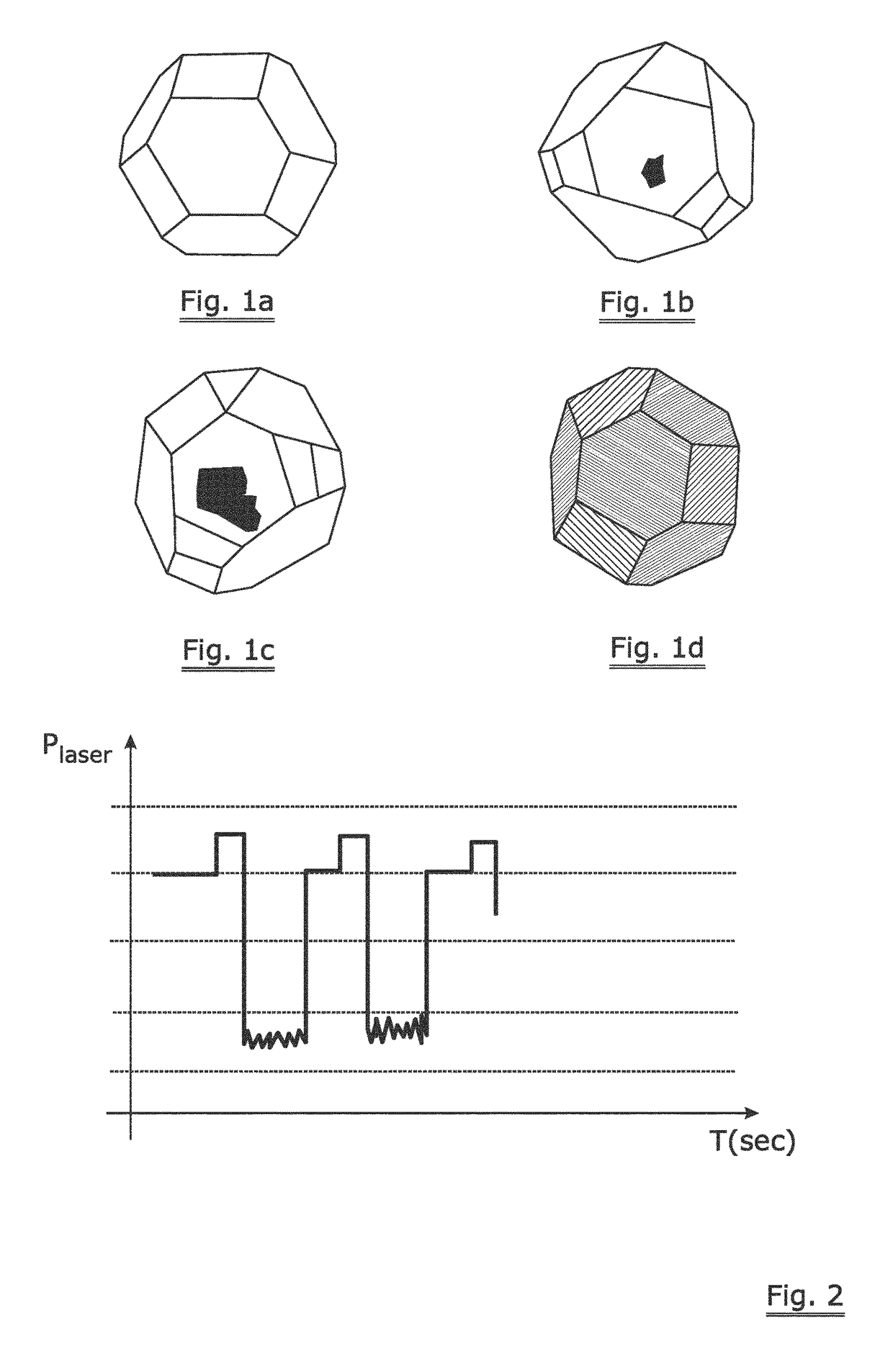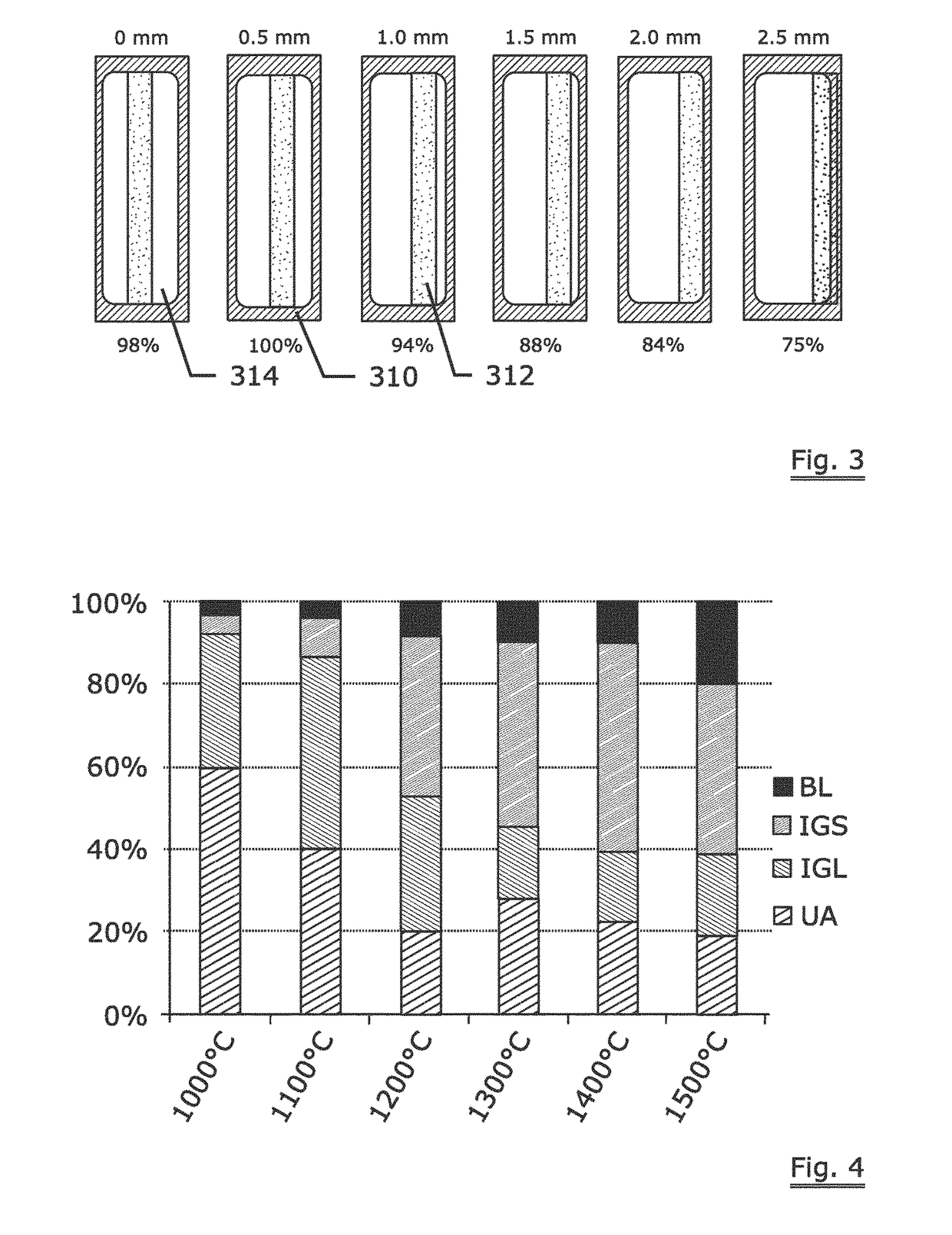Sawing beads and method for making the same
a technology of manufacturing method and sawing bead, which is applied in the field of sawing bead manufacturing, can solve problems such as negatively affecting performance, and achieve the effect of good or better sawing performance and low diamond degradation
- Summary
- Abstract
- Description
- Claims
- Application Information
AI Technical Summary
Benefits of technology
Problems solved by technology
Method used
Image
Examples
Embodiment Construction
[0091]In a series of experiments laser cladded beads were made on mild steel cylindrical sleeves of length 11 mm, having an outer diameter of 5.00 mm and a wall thickness of 0.575 mm.
[0092]The following type of equipment was used:[0093]Laser cladding system[0094]Diodelaser ‘Laserline LDF 3 kW’ operating at 1900 W in continuous mode at wavelengths of 808 and 940 μm.[0095]A lateral feed channel for feeding metal matrix powder and diamond, the diamond being separately controllable from the metal matrix powder flow;[0096]Powder handling equipment:[0097]Sulzer Metco Twin powder hopper[0098]Gas supply: argon.[0099]Both metal matrix material and diamond particles were fed through the same argon gas flow.
[0100]As a metal matrix material powder obtained from Phoenix Scientific Industries Ltd. of composition Cu—Sn (13 wt %)—Ti (9 wt %) was used. Differential Scanning Calorimetric analysis revealed that solid-solid phase transitions start to occur at about 765° C. and that the powder completel...
PUM
| Property | Measurement | Unit |
|---|---|---|
| temperature | aaaaa | aaaaa |
| mean size | aaaaa | aaaaa |
| temperature | aaaaa | aaaaa |
Abstract
Description
Claims
Application Information
 Login to View More
Login to View More - R&D
- Intellectual Property
- Life Sciences
- Materials
- Tech Scout
- Unparalleled Data Quality
- Higher Quality Content
- 60% Fewer Hallucinations
Browse by: Latest US Patents, China's latest patents, Technical Efficacy Thesaurus, Application Domain, Technology Topic, Popular Technical Reports.
© 2025 PatSnap. All rights reserved.Legal|Privacy policy|Modern Slavery Act Transparency Statement|Sitemap|About US| Contact US: help@patsnap.com



